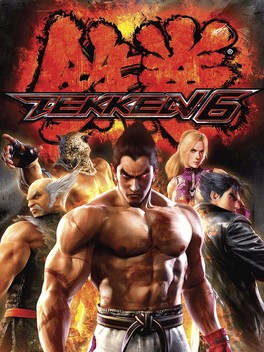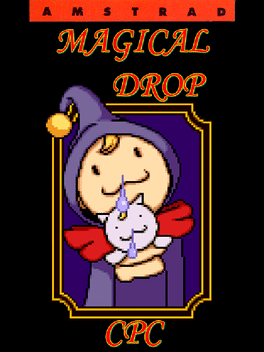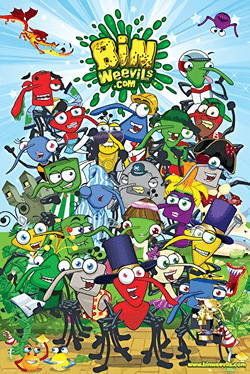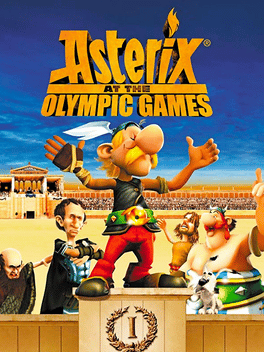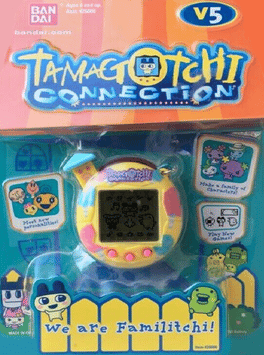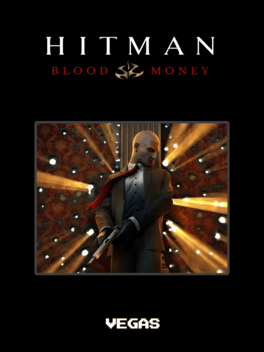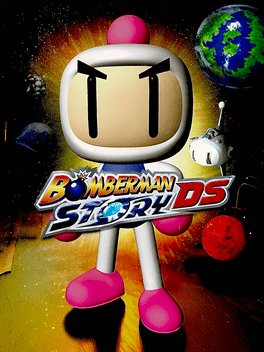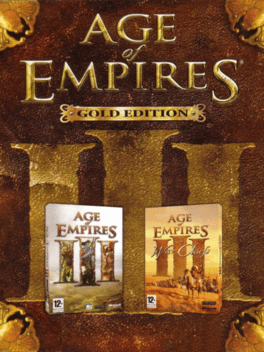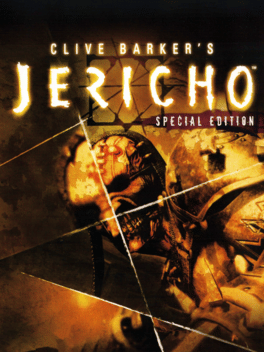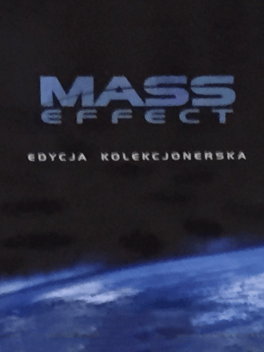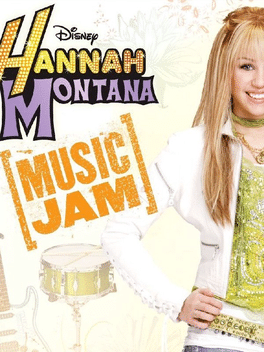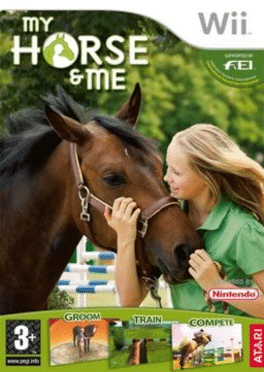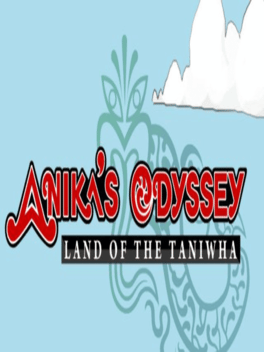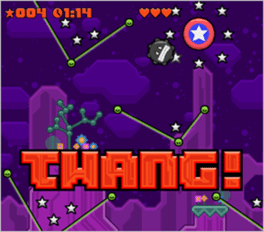New Games - Page 10048
-
Tekken 6
2007
Tekken 6
2007
star 7.6Tekken 6 is a fighting game developed and published by Bandai Namco Games. It is the seventh main installment in the Tekken franchise. It was released in Japanese arcades on November 26, 2007 as the first game running on the PlayStation 3-based System 357 arcade board. The game received an update, subtitled Bloodline Rebellion, a year later. -
Esklavos C10
2007
-
Guest House
2007
-
Magical Drop CPC
2007
Magical Drop CPC
2007
A homebrew CPC conversion by Oscar Sanchez (aka Mochilote) of the 1995 classic from Data East -
Bin Weevils
2007
Bin Weevils
2007
Welcome to the 3D world of Bin Weevils, an ever changing virtual world where you can chat with friends, play fun games, explore locations, become a Secret Agent on a mission, train your own Bin Pet, grow gardens, decorate nest rooms, level up, crack puzzles, run virtual businesses, and so much more. -
Tamagotchi Connection V5 Familitchi
2007
The Tamagotchi Connection Version 5 "Familitchi" is the sixth model in the line of Tamagotchi Connection virtual pets. The Japanese edition was released on November 23, 2007, and globally as the V5 Familitchi in January 2008. Unlike the previous Tamagotchi Connection releases after the V1, the V5 is a functionally identical to its Japanese counterpart. A new feature is that you can raise Tamagotchi Families, with up to 3 kids, and on Generation 2 or higher, two parents. -
Hitman: Blood Money Vegas
2007
Enter the Dark underworld of organized crime as Agent 47, the ruthlessly efficient and professional Hitman. Your mission and objectives are issued by the ever present mission controller, DIANA. Can you achieve your objectives and dispatch your targets while remaining undetected? Shadows, Disguises and silent weapons are your best chances of getting through this isometric stealth adventure alive. -
My Animal Centre in Australia
2007
Part of the successful My Animal Centre range of products, the gorgeous coast area of Australia offers a whole new and unique location to the anticipated My Animal Centre in Australia. Have fun in the Australian landscape and enjoy the new water worlds, funny animated games and a host of Australia's most popular wildlife, such as Kangaroos, Koalas and Dolphins. You can also gain knowledge about the animals in association with Wildlife Victoria. Learn all about the animals and how to take care of them from the experts! Expand your knowledge of the animals and how they need to be medically treated, all of the illnesses were included in conjunction with Wildlife Victoria -
Bomberman Story DS
2007
Bomberman Story DS
2007
star 5.9Bomberman Story DS is a sequel to Bomberman Tournament that was released in Japan and Europe. -
Age of Empires III: Gold Edition
2007
Age of Empires III Gold Edition combines the exciting Age of Empires III and its respective expansion pack, Age of Empires III: The WarChiefs for one compelling gaming experience at a great value. Age of Empires III gives players the opportunity to pick up where Age of Empires II: The Age of Kings left off, placing them in the time period of roughly 1500-1850. As players work to establish their empire, they will take on the role of a European power struggling to explore, colonize and conquer North and South America. In addition, players will also have the chance to engage in epic warfare in the Americas with Age of Empires III: The WarChiefs, where they will lead proud, playable native civilizations to expand their empire and fight for control of the Americas. -
Clive Barker's Jericho: Special Edition
2007
Sometimes referred to as simply Jericho, is a first person shooter survival horror video game with author Clive Barker providing the premise of the storyline. Jericho's core gameplay consists of leading the game's seven-man team codenamed Jericho, allowing control of all team members by jumping to each character during certain points in the game, through various environments that have been warped by the Firstborn while fighting off a variety of twisted creatures. -
Mass Effect: Polish Collector's Edition
2007
star 6A Collector's Edition for the PC version of the game was sold exclusively in Poland and it featured the following content: - A black cardboard box with a print depicting a planet on the bottom half of the box, as well as the Mass Effect logo and the words "Edycji Kolekcjonerskiej" (Collector's Edition in Polish). - A DVD box housing the English and Polish copies of the game, and a bonus DVD (possibly the same found in the Xbox 360 Limited Collector's Edition). - A N7 t-shirt. - An art book (possibly the same found in the Xbox 360 Limited Collector's Edition). - A guide to the game in Polish. - A mouse pad featuring the Normandy. - Three postcards. - A 2 GB USB flash drive with the Mass Effect logo printed on it. - A blue lanyard with the Mass Effect logo repeated all over its length. -
Boulder Dash: Rocks!
2007
Boulder Dash: Rocks!
2007
star 6.6Boulder Dash Rocks! is an updated take on the classic game Boulder Dash. -
Hannah Montana: Music Jam
2007
star 6Student by day. Pop star by night. The latest game based on the hit Disney Channel series, Hannah Montana , Hannah Montana: Music Jam, transports you into the exciting and sometimes crazy world of Miley Stewart and her alter ego Hannah Montana. Adventure out as Hannah or Miley, and develop musical talents, coordinate high fashions, and live out the dream of becoming a pop star in Hannah’s greatest musical challenge yet. Enter the Music Jam Video competition and compete against Savannah Star — a rising new singer out to challenge Hannah — at the same time as a cool new transfer student, Josie Moore, seems to be stealing all of Miley’s friends. To help her win the competition, use the Nintendo DS Touch Screen to master the guitar and drums. In a mix of adventure and creative modes, control Hannah/Miley as she composes her Music Jam Video entries, keeps her friends happy, and in the end, learns a little something about what it means to be a real star. Use the DS stylus to “play” the guitar, bass guitar, -
Petz: Catz 2
2007
Petz: Catz 2
2007
Petz: Catz 2, known in Japan as Nyanko to Mahou no Boushi and in Europe as simply Catz, is an adventure game developed by Yuke's for the Nintendo Wii and PlayStation 2 consoles, published and released by Ubisoft in 2007. It is a spiritual successor to THE DOG Island, in which the player controls a young kitten on a quest to save the world and retrieve the titular Magic Hat back from the evil wolf, Ivlet. -
Petz: Dogz 2
2007
Petz: Dogz 2
2007
Pick a puppy pal from a pack of fuzzy and adorable puppies in Petz Dogz 2! Together, you and your new cuddly companion will encounter a world that’s fun to play in, explore, and share. Dress up your puppy in fun puppy clothes, play for hours with new toys, or look for hidden surprises that can give your puppy new abilities. Customize your puppy’s environment with items and toys, and unlock more goodies as you get better at caring for your new best friend. Watch your puppy grow, go on quests and adventures together, and unlock awesome mini-games. -
My Horse & Me
2007
My Horse & Me
2007
star 3.5Delivering all the excitement and fun of the equestrian life, from sports and leisure riding to horse care, My Horse and Me is a unique gaming experience for anyone with an interest or passion for horses. The game features the most accurate horse models and animations yet realized in a video game, alongside a richly rewarding game play experience, all set against a beautiful backdrop of charming indoor and outdoor environments. -
Anika's Odyssey
2007
Anika's Odyssey
2007
Anika's Odyssey is an adventure that will take you deep into a lush and enchanted land. Author Comments: Anika's Odyssey is a magical adventure deep into a lush and enchanted land. Break away from reality to enter a mystical world inspired by Aotearoa, New Zealand, as you meet the curious spirits and exotic creatures that inhabit this wondrous wilderness. Anika's Odyssey is an enchanting point-and-click adventure game, full of a surprises and charm. Help Anika explore her colorful landscape as she journeys to reclaim her beloved friend. -
Twang
2007

